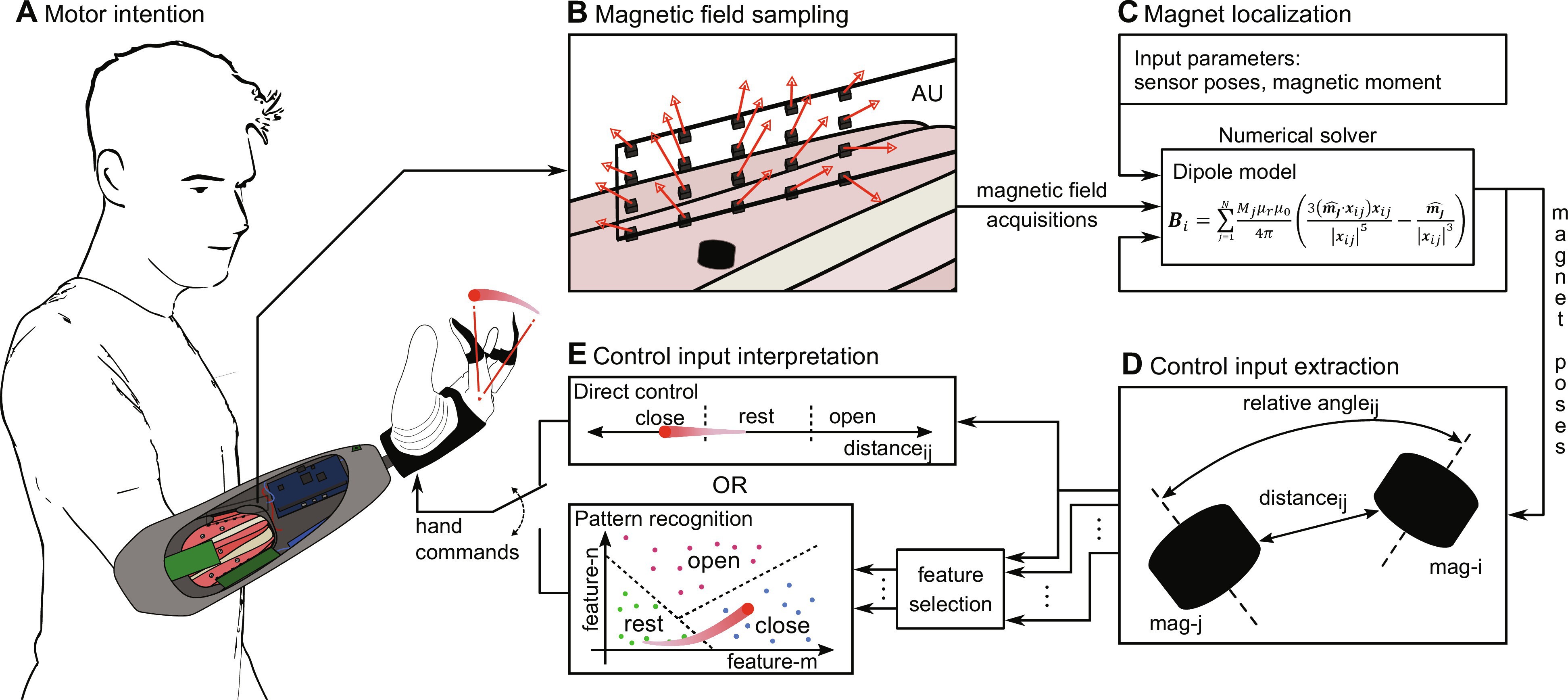Published on
updated on
Reading 3 min.
Thanks to an unprecedented medical innovation, amputees can now control a bionic hand with their minds, without wires or electrodes. This revolutionary technology offers natural control of movements, making precise everyday gestures possible and giving amputees an unexpected autonomy.
A medical breakthrough now allows amputees to control a bionic hand with their minds thanks to a unique myokinetic interface. The latter captures muscle movements via magnets implanted in the residual muscles of the amputated arm and interprets them into movements, thus offering precise and intuitive control of gestures. This technology promises to revolutionize the daily lives of patients.
Wireless interface allows thought control
No wires, no electrical connection, just magnets and muscles to control finger movements and enable everyday activities like opening a jar, using a screwdriver, picking up a coin, using a zipper…
A research team from theBioRobotics Institute of the Scuola Superiore Sant’Anna in Pisacoordinated by Professor Christian Cipriani, has developed a radically new interface between the amputee’s residual arm and the robotic hand capable of decoding motor intentions.
Unlike traditional systems using surface electrodes, this new technology relies on a myokinetic interface. The system involves implanting small magnets into the muscles of the remaining forearm.The forearm is made up of 20 muscles, many of which control hand movements. Many people who have lost a hand continue to feel as though it is still in place and that the remaining muscles move in response to commands from the brain.” explains Cipriani.

The research team mapped these movements and translated them into signals to guide the fingers of the robotic hand. Magnets have a natural magnetic field that can be easily localized in space. When the muscle contracts, the magnet moves, and a special algorithm translates this change into a specific command for the robotic hand.
“I feel like I’m moving my own hand”
Daniel lost his left hand in September 2022. He was selected as a volunteer for the study because he still felt the presence of his hand and the residual muscles in his arm responded to his intentions to move. Six magnets were implanted in Daniel’s arm. For each of them, the team of surgeons and doctors located and isolated the muscle, positioned the magnet, and verified that the magnetic field was oriented in the same way.
“To facilitate the connection between the residual arm where the magnets were implanted and the robotic hand, we made a carbon fiber prosthetic socket containing the electronic system capable of localizing the movement of the magnets” explains Cipriani.
The results of the experiment far exceeded the most optimistic expectations. Daniel was able to control the movements of his fingers, grasp and move objects of different shapes, perform classic everyday actions such as opening a jar, using a screwdriver, cutting with a knife, closing a zipper… He was able to control the force when he had to grasp fragile objects.This system has allowed me to recover lost sensations and emotions: I feel like I am moving my own hand” Daniel enthuses.
Possible applications for other types of disabilities
“Seeing the result of several years of research in this study was a great emotion. Working with Daniel made us realize that we can do a lot to improve his life and that of many other people. This is the greatest motivation that pushes us to continue our work and always do better.” explains Marta Gherardini, assistant professor at the Scuola Superiore Sant’Anna and first author of the study.
With these impressive results, Professor Cipriani says he is ready to extend this technique to a wider range of amputations.
